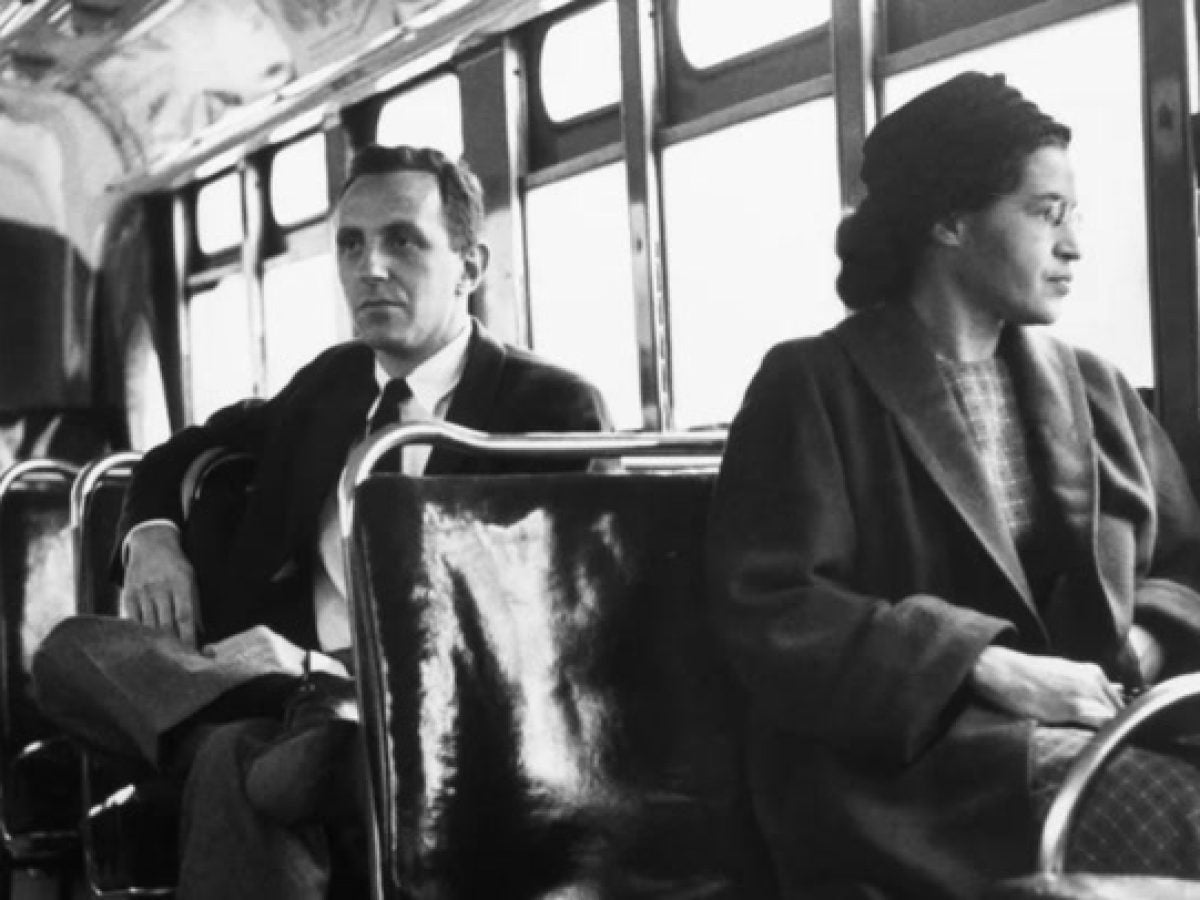
Sixty-eight years ago on this day, December 1 1955, Rosa Parks was arrested “for disobeying an Alabama law requiring Black passengers to relinquish seats to white passengers when the bus was full,” per the Library of Congress.
That same law also required Black people “to sit at the back of the bus.”
What you might not have known is that this wasn’t Parks’ first time protesting for civil rights “on a bus.” More than a decade earlier, in 1943 Parks was trying to get “to the clerk’s office so she could register to vote.” But when she boarded the bus, the white driver ordered her to “re-board the standing-room only bus by entering from the back.”
Incensed, Park deboarded and made the decision to wait for the next scheduled bus, vowing that “she would never ride again with that driver.”
Twelve years later, Parks had heard “civil rights leader Dr. T.R.M. Howard describe what happened to Emmett Till.” That Thursday evening Parks finished up her seamstress job for the day and boarded a bus to go home. “She paid her fare and took an empty seat in the area of the bus marked ‘coloured.’”
After everyone had boarded, James Blake, the white bus driver, spotted a white passenger “standing just inside the entrance.” Blake proceeded to demand that Parks along with three other Black passengers to give up their seats.
Even though none of the four were sitting in the white section, and only one white person “needed a seat, all four blacks were required to move because the segregation statutes also stated that it was illegal for any black to sit in the same row as a white on a city bus,” the Los Angeles Times reports.
After no one immediately moved, Blake got up and walked back, again telling them to get up and move. “You’d better make it light on yourselves and let me have those seats,” said Blake.
When the other three Black passengers moved, Parks made a different decision. She “refused, saying she was not seated in the white section of the bus and didn’t think she should have to move,” and remained in her seat.
Minutes after Blake called his supervisor, Montgomery police officers arrived on scene and arrested Parks and took her to jail. She was later released “after friends posted a $100 bail. She was ultimately fined $14–$10 for the offense and $4 for court costs.” An inflation calculator shows that would be today’s equivalent of $1,308.75.
In contradiction to the legend that she was simply tired after a long day’s work, later on Parks rectified that sentiment, stating, “People always say that I didn’t give up my seat because I was tired, but that isn’t true. I was not tired physically, or no more tired than I usually was at the end of a working day.”
“I was not old, although some people have an image of me as being old then,” Parks continued. “I was forty-two. No, the only tired I was, was tired of giving in.”
Park’s spontaneous decision to say no would ignite and galvanize the civil rights movement. After the NAACP and other Black activists learned about her arrest, “they immediately called for a bus boycott to be held by Black citizens on Monday, December 5.”







The Montgomery Bus Boycott would go on for more than a year later, with participants carpooling or walking to work and school. Because Blacks at that time were the majority users of Montgomery buses, with ridership numbers around 70%, the transit system was heavily impacted.
Then, “[o]n November 13, 1956, the U.S. Supreme Court struck down Alabama state and Montgomery city bus segregation laws as being in violation of the equal protection clause of the 14th Amendment to the U.S. Constitution.”
A month later, Dr. Martin Luther King, Jr. issued a statement on December 20, 1956, which said in part, “The year old protest against city buses is officially called off, and the Negro citizens of Montgomery are urged to return to the buses tomorrow morning on a non-segregated basis.” And the next day, the boycott was called off, with Parks being among one of the first riders of “the newly desegregated buses.”






